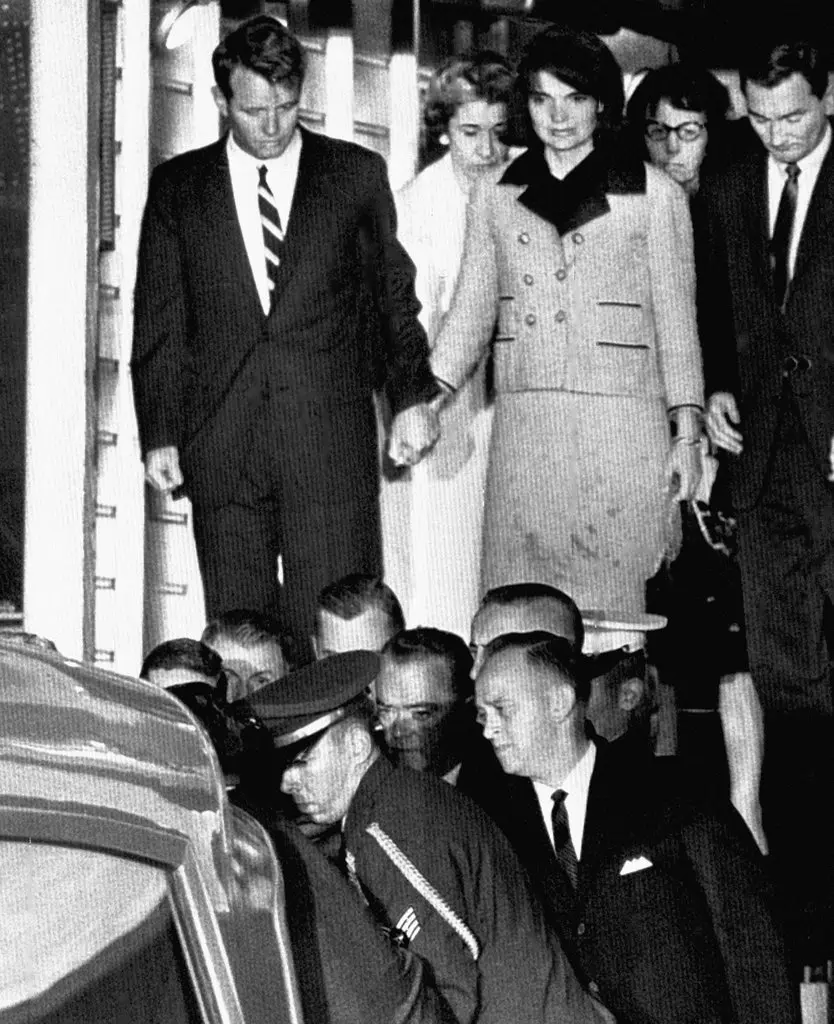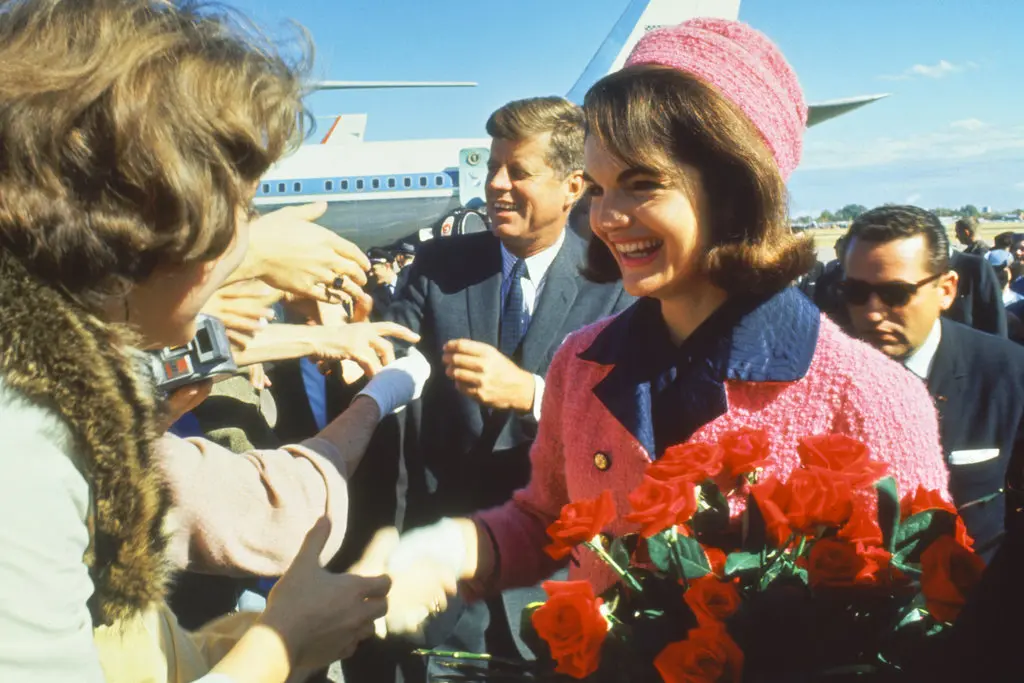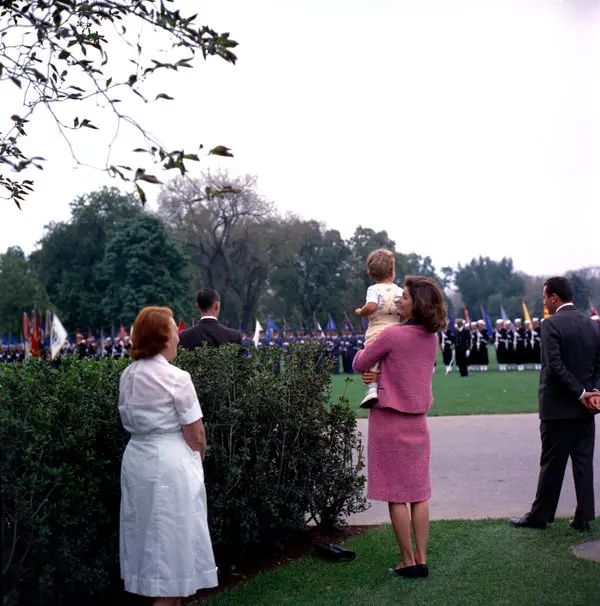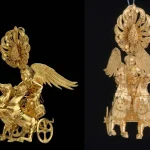The Pink Suit: Jacqueline Kennedy’s Silent Protest
On November 22, 1963, as Jacqueline Kennedy walked out of Parkland Hospital in Dallas, she carried with her not only the weight of sudden widowhood but also the visual evidence of one of the most devastating moments in American history. Her pink Chanel-style suit, stained with her husband’s blood, became an enduring symbol of national grief.
Several aides and nurses offered her a clean change of clothes, even a washcloth to wipe away the stains. She refused them all. Her quiet, resolute reply—“No. Let them see what they’ve done to Jack”—was more than an act of defiance. It was grief made visible, sorrow sharpened into protest, dignity wrapped in silence.
Only hours earlier, Jackie had cradled President John F. Kennedy’s head in her lap as the motorcade sped toward the hospital, her gloved hands soaked in blood. That same blood now stained her clothing, a shocking counterpoint to the softness of her suit. She chose to wear it for the rest of the day, including during the swearing-in of Lyndon B. Johnson aboard Air Force One.
That single choice—refusing to conceal the horror—turned her into both mourner and messenger. The image of Jackie Kennedy in her bloodstained suit is etched into the American memory: a widow’s grief, a First Lady’s last stand beside her husband, and a nation’s first glimpse of the pain left in the wake of a president’s assassination.
Her pink suit, preserved today in the National Archives but hidden from public display until at least 2103, remains more than just an artifact. It is a silent witness, a testament to love, loss, and the way one woman’s refusal to look away forced the entire world to face what had been lost.











